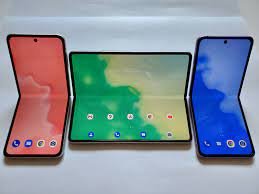Mobile Computing: The Rise of Portable Devices
Introduction
In an increasingly connected world, mobile computing has emerged as a transformative force, empowering users to access information, communicate, and stay productive from anywhere at any time. From the advent of smartphones to the rise of tablets and wearables, portable devices have become ubiquitous in our daily lives, reshaping the way we interact with technology and each other. This article delves into the evolution of mobile computing, highlighting the key milestones and innovations that have fueled the proliferation of portable devices and revolutionized the way we live, work, and play.
The Emergence of Smartphones
The Birth of the Smartphone Era
The smartphone revolution began in the early 2000s with the introduction of devices like the BlackBerry and Palm Pilot, which combined mobile phone functionality with personal digital assistant (PDA) features. However, it was the launch of the iPhone in 2007 that truly revolutionized the industry, ushering in a new era of touchscreens, app ecosystems, and mobile internet connectivity. The iPhone’s intuitive interface, sleek design, and robust app store set the standard for modern smartphones and laid the foundation for the mobile computing revolution that followed.
Engaging Paragraph: The introduction of smartphones marked a paradigm shift in the world of computing, putting powerful computing capabilities and internet connectivity in the palms of our hands. With the iPhone leading the charge, smartphones quickly became indispensable tools for communication, productivity, and entertainment, blurring the lines between traditional computing devices and mobile phones. From email and web browsing to gaming and social media, smartphones empowered users to stay connected and informed on the go, paving the way for a more mobile-centric lifestyle.
The Rise of Android and the Mobile Ecosystem
Following the success of the iPhone, Google entered the smartphone market with the launch of the Android operating system in 2008. Android’s open-source platform and customizable interface quickly gained traction among manufacturers, leading to a diverse array of devices catering to different preferences and budgets. The proliferation of Android smartphones, coupled with the growth of the Apple App Store and Google Play Store, fueled the expansion of the mobile ecosystem, giving rise to a thriving marketplace for apps, games, and digital content.
Engaging Paragraph: The rise of Android smartphones democratized mobile computing, offering consumers a wide range of choices and price points to suit their needs and preferences. With Android’s open-source platform and extensive developer support, manufacturers were able to innovate and experiment with new form factors, features, and technologies, driving rapid advancements in mobile hardware and software. The proliferation of smartphones running Android and iOS created a vibrant mobile ecosystem, providing users with access to millions of apps and services that enhance productivity, entertainment, and connectivity on the go.
The Evolution of Tablets and Wearables
The Tablet Revolution
In addition to smartphones, tablets have emerged as popular mobile computing devices, offering larger screens and more immersive experiences for gaming, multimedia consumption, and productivity. The launch of the iPad in 2010 propelled the tablet market into the mainstream, showcasing the potential of touch-based computing and mobile productivity. With their lightweight design, long battery life, and versatile form factors, tablets have become indispensable tools for users seeking a balance between portability and productivity in their computing devices.
Engaging Paragraph: The iPad’s introduction revolutionized the tablet market, redefining how users interact with digital content and consume media on the go. With its intuitive touch interface, vibrant display, and extensive app ecosystem, the iPad sparked a wave of innovation in mobile computing, inspiring competitors to develop their own tablets and hybrid devices. Today, tablets come in a variety of sizes, shapes, and configurations, catering to different use cases and user preferences, from entertainment and gaming to business and education.
The Rise of Wearable Technology
In recent years, wearable devices have emerged as a new frontier in mobile computing, offering users convenient access to information, health monitoring, and communication capabilities in a compact and wearable form factor. From smartwatches and fitness trackers to augmented reality (AR) glasses and wearable cameras, wearable technology has gained popularity among consumers seeking to augment their digital lifestyles with seamless and hands-free computing experiences.
Engaging Paragraph: Wearable technology represents the next evolution in mobile computing, blurring the boundaries between the digital and physical worlds and enabling new forms of interaction and communication. Whether tracking fitness goals, receiving notifications, or accessing information on the go, wearable devices offer users a convenient and intuitive way to stay connected and informed without being tethered to a smartphone or computer. With advancements in miniaturization, battery life, and sensor technology, wearables are poised to revolutionize how we interact with technology and each other in the years to come.
Conclusion
The rise of mobile computing has transformed the way we live, work, and communicate, ushering in a new era of connectivity, convenience, and innovation. From smartphones to tablets and wearables, portable devices have become indispensable tools for navigating our increasingly digital world, empowering users to stay productive, informed, and connected on the go. As technology continues to evolve and mobile computing becomes more integrated into our daily lives, the possibilities for innovation and advancement are endless. Whether it
